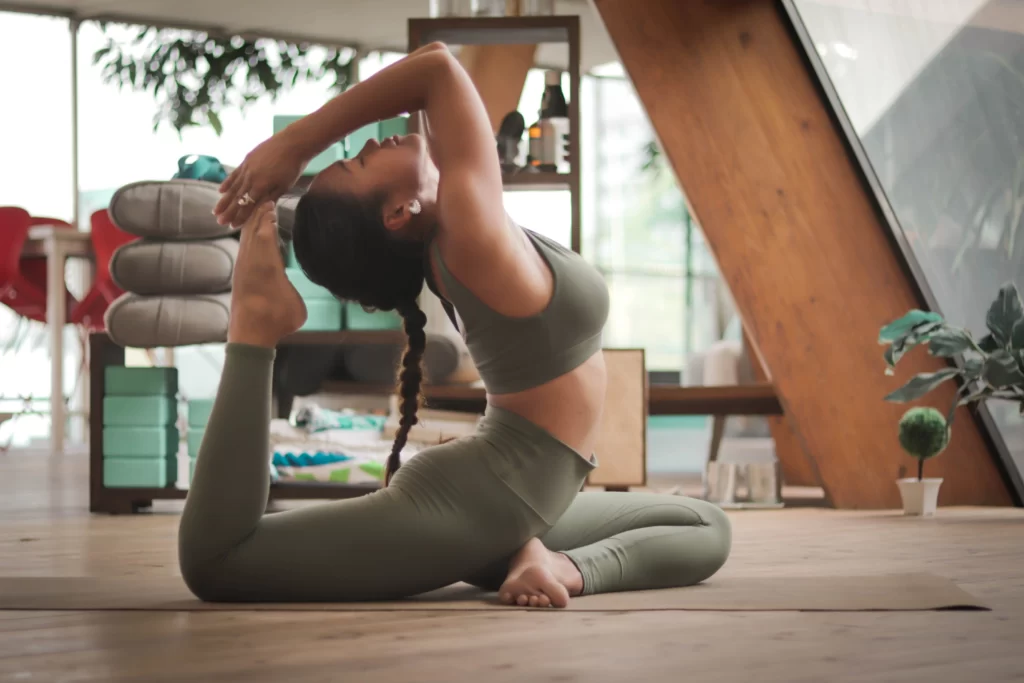Revitalize Your Mind and Body with Yoga Bliss
In today’s fast-paced world, finding a moment of tranquility and rejuvenation is more important than ever. The constant hustle and bustle of daily life can take a toll on your mental and physical well-being. Fortunately, there is a time-tested practice that can help you find balance, reduce stress, and reconnect with your inner self – yoga. In this article, we will explore the transformative power of yoga and how it can revitalize your mind and body.
The Origins of Yoga: Ancient Wisdom for Modern Life
Yoga is not just a physical exercise; it’s a way of life that dates back thousands of years. Its roots can be traced to ancient India, where sages and yogis developed this practice as a means to attain harmony between mind, body, and soul. Today, yoga has evolved into a global phenomenon, offering a pathway to well-being for people of all backgrounds.
Physical Benefits of Yoga
Yoga offers a multitude of physical benefits. It increases flexibility, strengthens muscles, and improves posture. The various poses and asanas (postures) help enhance balance and coordination. Regular practice can also alleviate chronic pain, such as lower back pain and arthritis. Moreover, yoga’s emphasis on deep breathing enhances lung capacity and oxygenates the body’s cells, promoting overall health.
Mental and Emotional Well-being
Beyond its physical advantages, yoga is a powerful tool for mental and emotional well-being. It reduces stress by calming the nervous system and lowering cortisol levels. The practice of mindfulness during yoga sessions fosters self-awareness and emotional resilience. This makes it an excellent choice for those looking to manage anxiety and depression.
Yoga Styles and Finding Your Bliss

Yoga comes in various styles, each with its unique approach and benefits. From the vigorous Vinyasa flow to the gentle Yin yoga, there is a style to suit everyone. Finding the one that resonates with you is key to experiencing the full benefits of yoga.
The Importance of Breath
Central to yoga is the breath. Pranayama, or breath control, is an essential aspect of the practice. It enhances oxygen intake, calms the mind, and improves concentration. Learning to synchronize breath with movement is fundamental in achieving a state of yoga bliss.
Yoga Poses for Beginners
If you’re new to yoga, starting with beginner poses like the Downward Dog, Child’s Pose, and Cobra Pose is a great way to ease into the practice. These poses build a strong foundation for more advanced asanas.
Advanced Asanas for the Experienced
For seasoned practitioners, advanced poses like the Wheel Pose, Crow Pose, and King Pigeon Pose provide a thrilling challenge. These poses require strength, flexibility, and a deep understanding of body alignment.
Yoga Props and Accessories
Yoga props such as blocks, straps, and bolsters can aid in achieving proper alignment and deepening stretches. They are particularly helpful for individuals with physical limitations.
Yoga Retreats: A Journey to Inner Peace
For a profound yoga experience, consider embarking on a yoga retreat. These immersive getaways offer the opportunity to disconnect from the distractions of daily life and delve deep into your practice. Yoga retreats are often set in idyllic natural surroundings, creating a serene environment for self-discovery.
Yoga and Mindfulness Meditation
Meditation is a natural complement to yoga. It enhances mental clarity, reduces stress, and promotes inner peace. Combining yoga and meditation creates a powerful synergy for holistic well-being.
Yoga for Stress Reduction
One of yoga’s most celebrated benefits is its ability to reduce stress. The combination of physical postures, breath control, and mindfulness techniques helps the body and mind relax, releasing tension and anxiety.
Yoga for Better Sleep
Incorporating yoga into your daily routine can improve sleep quality. Relaxing poses and deep breathing exercises prepare the body for rest, making it easier to fall asleep and stay asleep.
Yoga and Nutrition: A Holistic Approach
Yoga is not limited to the mat; it extends to your plate. Practicing mindful eating and choosing nourishing foods aligns with yoga’s holistic philosophy of well-being.
Yoga for All Ages and Abilities
Yoga is an inclusive practice suitable for individuals of all ages and abilities. Whether you’re a young adult or a senior, a seasoned athlete or a beginner, yoga can be adapted to meet your specific needs and goals.
Conclusion: Embrace Yoga for a Balanced Life
In conclusion, yoga offers a holistic approach to revitalizing your mind and body. It combines physical fitness, mental clarity, emotional balance, and spiritual growth. By embracing yoga as a part of your life, you can achieve a sense of harmony and well-being that transcends the chaos of the modern world.
FAQs
1. Is yoga suitable for beginners?
Absolutely! Yoga is accessible to individuals of all levels, including beginners. There are many beginner-friendly classes and resources available to help you get started.
2. How often should I practice yoga to see results?
Consistency is key. Aim for at least three to four sessions per week to experience the full benefits of yoga.
3. Can yoga help with weight loss?
While yoga may not be a high-intensity calorie-burning exercise, it can contribute to weight management by improving metabolism and promoting mindful eating habits.
4. Are there age restrictions for practicing yoga?
No, yoga is for people of all ages. It can be adapted to suit the needs and capabilities of individuals, including seniors.
5. What should I bring to a yoga class?
Most yoga studios provide mats and props, but it’s a good idea to bring comfortable clothing, a water bottle, and an open mind to fully enjoy your practice.




